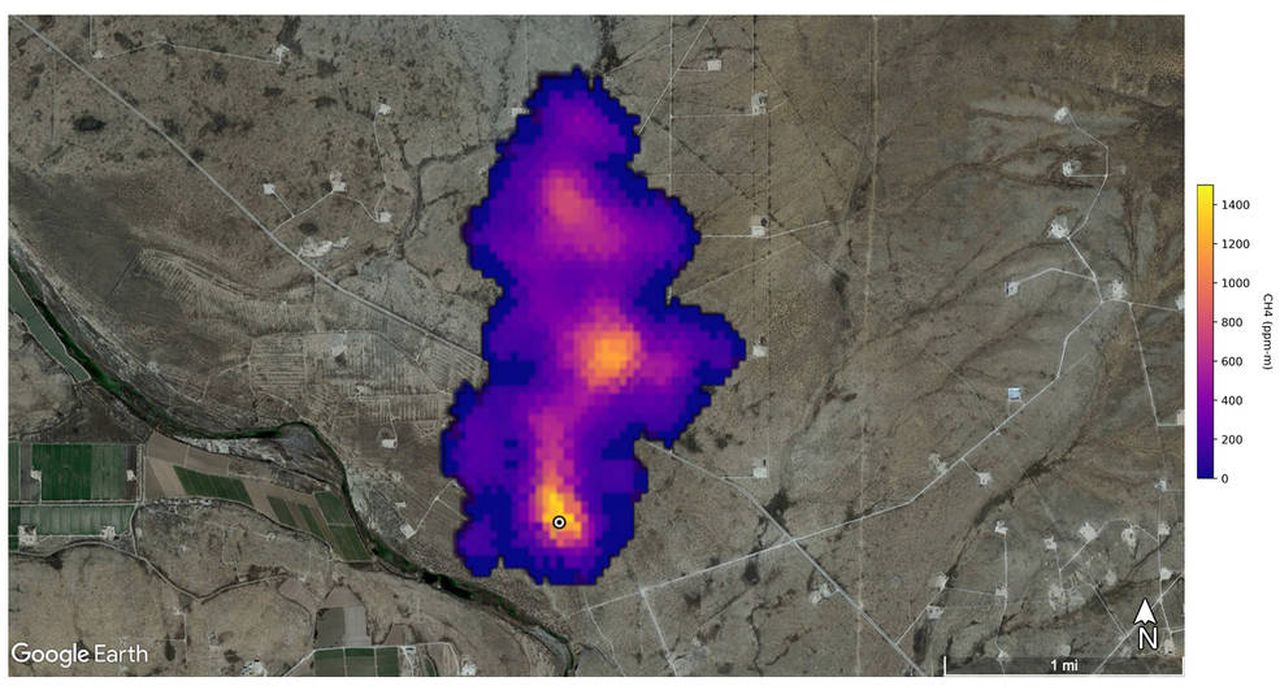NASA looks for minerals, finds ‘super-emitters’ of greenhouse gas methane
A NASA mission to map key minerals in Earth’s deserts has proved to have another “crucial capability” – the ability to detect the greenhouse gas methane.
The Earth Surface Mineral Dust Source Investigation (EMIT) has found “more than 50 ‘super-emitters’” since starting to operate on the International Space Station in July, NASA said today. They are in Central Asia, the Middle East and the Southwestern United States.
NASA defines super-emitters as facilities, equipment and other infrastructure – typically in the fossil-fuel, waste and agricultural sectors – that emit high rates of methane.
Methane is a minor greenhouse gas compared to carbon dioxide, NASA said, but “it’s estimated to be 80 times more effective, ton for ton, at trapping heat in the 20 years after release.”
“Reining in methane emissions is key to limiting global warming, NASA Administrator Bill Nelson said. “This exciting new development will not only help researchers better pinpoint where methane leaks are coming from, but also provide insight on how they can be addressed – quickly.”
